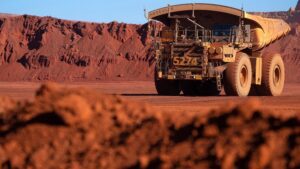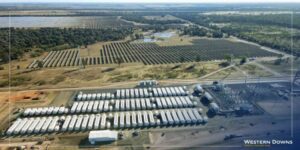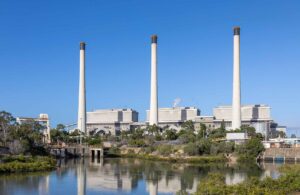Activists opposed to energy projects shouted outside federal parliament on the anniversary of Black Saturday, as survivors of the firestorm called for communities everywhere to support the shift to renewable power.
Fifteen years after the disaster in regional Victoria killed 173 people and destroyed more than 2000 homes, bushfire survivors and former emergency service leaders are calling for greater investment in solar and wind.
The fires were the first time many communities experienced the shocking reality of a changing climate, said former Fire and Rescue NSW commissioner Greg Mullins, a founding member of Emergency Leaders for Climate Action.
“The ferocity of Black Saturday took fire services by surprise and caused a fundamental rethink about national policies on evacuations and emergency warnings,” he said.
Increasingly dangerous fire behaviour is driven by hotter and more unpredictable weather, said the former firefighting chief.
“Urgent action on climate pollution caused by the burning of coal, oil and gas is imperative,” Mr Mullins said.
Bushfire Survivors for Climate Action CEO Serena Joyner wants everyone to live in a home that’s safe from the extreme impacts of climate change, which is why she supports Australia’s rollout of renewable energy to replace coal and gas.
“As survivors of these disasters we know the stakes,” Ms Joyner said.
“With our abundant wind and sun, world-class technology and legendary know-how we can power Australia with renewable energy instead.”
Households and businesses are installing solar and electrifying their homes and cars to permanently slash power bills and fuel costs, which is adding widely distributed clean energy assets to the electricity grid.
According to the Australian Energy Market Operator, the lowest-cost way to have secure and reliable power over coming decades is a renewable grid with hydro, batteries, quick-start gas plants and more than 10,000 kilometres of new or upgraded transmission.
But the “rally against reckless renewables” by several hundred demonstrators in Canberra on Tuesday called for the suspension of renewable energy projects across Australia and an inquiry into whether the rollout was in the national interest.
Nationals leader David Littleproud asked Prime Minister Anthony Albanese to call a national energy summit, and listen to communities instead of ripping up prime agricultural land for transmission lines and solar and wind farms.
“You saw the anger out there, the unintended consequences of this ideological race to 82 per cent renewables by 2030 has consequences,” Mr Littleproud told reporters.
“We’ve got plenty of time to do this.
“This isn’t city versus bush. This is about common sense.”
He said there should be more solar panels on people’s rooftops where the concentration of population and energy demand is located.
“And if we have the courage to take away the ban on nuclear energy, then what we have is an opportunity to have a mixture in our grid that gives us reliability and stability rather than putting all our energy eggs in one basket,” he said.
“We’re not against renewables, we’re against how this is being done and the impacts they’re having.”
Australia’s biggest emitter AGL Energy provided a potential blueprint for managing change with the 2023 closure of its coal-fired Liddell power station in NSW.
“You need to engage with the community closely … you need to explain what the benefit to the community and the broader market is,” AGL chief executive Damien Nicks told AAP.
“As a company that’s been doing major development of energy over 187 years, social licence is absolutely critical,” he said.
AGL is building so-called energy hubs in NSW, Victoria and South Australia, with big batteries to replace dirty and increasingly unreliable coal-fired plants.
Mr Nicks said the “blueprint for speed” was to use existing high-voltage connections and sites the company already owned.
“Where there’s transmission to be built, or other assets to be built on new land, it’s going to take longer because you want to get the planning right,” he said.
“What I’m advocating for is to do those projects that you can do, the easiest and the quickest first, because the connection is there, the sites are there.”
State government plans for green industrial precincts and new offshore wind farms could bring forward the closure of AGL’s remaining plants at Bayswater in NSW to 2030, and Victoria’s Loy Yang A in 2040.
Their exit would remove close to 5000 megawatts from the national electricity market, to be replaced by cleaner generation and energy storage.
Australia’s largest power station, Origin Energy’s coal-fired plant Eraring, can supply up to a quarter of NSW power needs and is also slated to close, as soon as August 2025.
Some 24 coal plants with a total capacity of 26.7 gigawatts announced their closure dates under the former coalition government.
Energy and Climate Minister Chris Bowen slammed coalition politicians for whipping up opposition at the “small rally” outside parliament
“They weren’t talking about better community consultation, they weren’t talking about community benefits,” he told Braidwood FM radio on Friday.
“They were talking about, frankly, climate change denial, conspiracy theories and all sorts of things,” he said.
“That’s not a legitimate debate to be having.”








